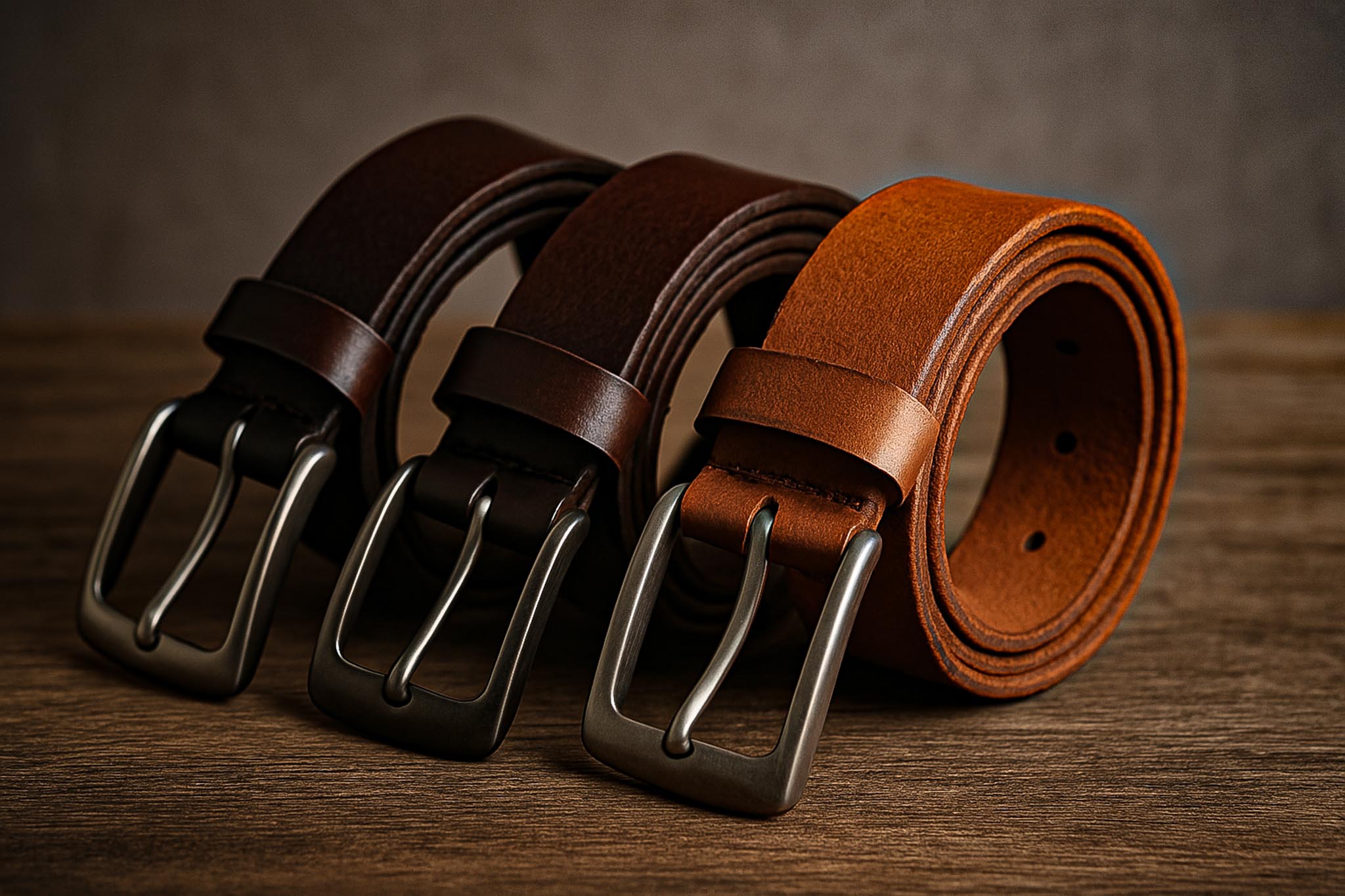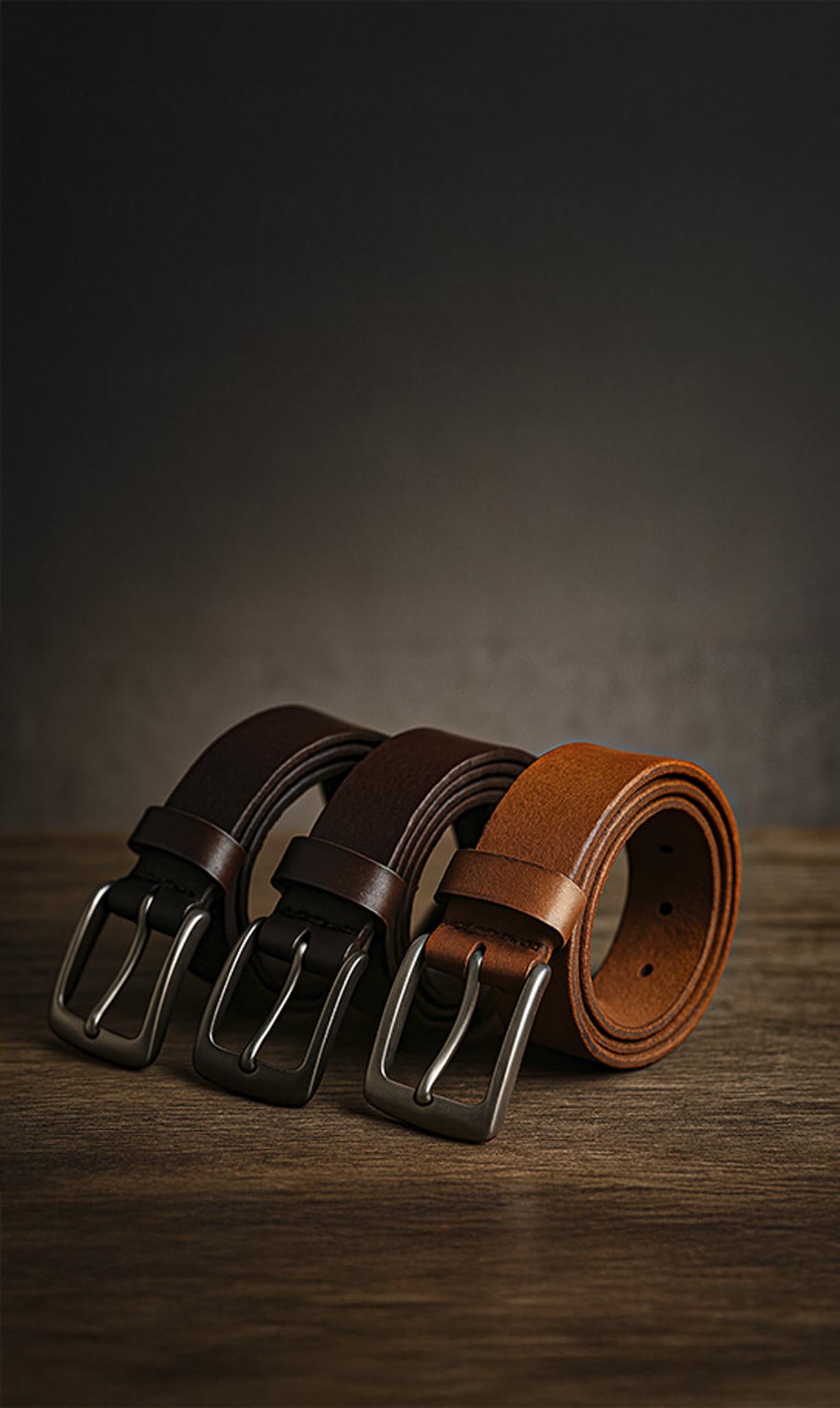How to Tell Genuine Leather from Fake: Simple, Practical Tips
Six easy methods - no tools needed


How to Tell Genuine Leather from Fake: Simple, Practical Tips
Six easy methods - no tools needed
This article offers clear, reliable ways to identify real leather at home. You’ll learn how to check it by smell, texture, edge, water reaction, and more. Perfect for buying belts, bags, shoes, or any leather goods.
1. Smell
This is one of the quickest and most reliable ways. Genuine leather has a distinctive scent - warm, rich, sometimes with a slightly earthy tone. It doesn’t smell like perfume or polish - it smells like leather. If you’ve ever walked into a workshop or a leather goods store, you’ll recognize it immediately. That kind of smell can’t be faked for long.
Synthetic materials usually give themselves away by the scent. Plastic, glue, rubber - the mix is usually harsh and chemical. Some manufacturers try to cover it with fragrance additives, especially in cheap shoes or bags. But those scents wear off quickly, and then the real smell comes through - often unpleasant.
If you catch even a hint of glue, paint, or something plasticky - don’t waste your time. That’s not leather. At best, it’s a bonded leather with a synthetic base.

2. Touch and Feel
How it feels in your hands says a lot. Real leather responds to touch. It’s warm, flexible, and has a bit of texture. Run your fingers over the surface - you’ll notice subtle resistance, softness, maybe even a bit of natural unevenness. High-quality leather reacts delicately - even if it’s smooth, it still feels alive.
Try bending or pressing the material. Real leather forms small creases or dents that fade on their own. It bounces back without damage. Synthetic leather usually doesn’t - it might crack, crease permanently, or show signs of peeling when bent sharply.
If the surface feels cold, too smooth, or doesn’t respond at all - chances are, it’s fake. This is especially noticeable with belts or bags. Real leather always feels a bit warmer, while synthetics can feel like touching vinyl.

3. Texture and Grain
Genuine leather comes from an animal, so it’s never 100% uniform. Look closely - you’ll see tiny pores, subtle scars, tone variations, and inconsistent grain patterns. These aren’t flaws - they’re proof of authenticity. Even in premium, polished leather, there’s always some irregularity.
Faux leather, on the other hand, uses stamped textures. The grain pattern is printed or pressed into the surface and often repeats every few inches. If the surface looks too perfect or symmetrical - that’s your clue. Especially on large items like bags or upholstery, the repeating texture becomes obvious.
If you’ve got good eyes or a magnifying glass, check different areas of the item. On real leather, each spot will be slightly different. On fake leather, it’s like a copy-paste pattern - too regular to be natural.

4. Edge or Cross-Section
If you can take a look at the edge or a cut - it tells you a lot. Real leather has a rough, fibrous cross-section. You’ll see tiny, uneven fibers, almost like compressed suede. Press it with your fingernail and you’ll feel some give - the edge won’t crumble or separate. Even if it’s been edge-painted, you can usually spot the texture somewhere inside or at the seams.
Faux leather edges are much cleaner and often multi-layered. You might see a fabric mesh or foam base inside. Some synthetic leathers have a plastic film top layer with a woven underside. Try scratching it gently with your nail: real leather will show a temporary mark that fades over time, while fake leather may peel or reveal a fabric layer underneath.
Also check the back side. Real leather is smooth or suede-like, depending on the finish. Synthetic material often has a perfectly uniform backing, or a textile net. If everything looks too clean or too perfect on the inside - be suspicious.

5. Water Test
One of the most reliable ways to test leather is with a drop of water. Genuine leather absorbs moisture. Just place a small drop on an inconspicuous area and wait 10–15 seconds. If it’s real - the drop will darken the surface slightly and slowly disappear as it’s absorbed. Depending on the finish, it might soak in faster or slower, but it won’t just sit there.
Faux leather repels water. The drop will stay on the surface and may even roll off without leaving any trace. This happens because of the synthetic coating, which blocks any absorption. Even if the surface looks porous - the water usually can’t get through.
Don’t overdo it. No need to soak the item. One drop is enough, especially on a seam or inner fold. This trick works particularly well on belts, wallets, and shoes.

6. Flame Test
ONLY IF SAFE AND APPROPRIATEThis method is mostly for workshops or when you have test scraps, but it’s very effective. Burn a small piece of the material at the edge. Real leather doesn’t catch fire quickly - it smolders slowly and smells like burnt hair or nails. That’s the protein (collagen) burning - a signature trait of animal hide. Afterward, it leaves behind a black, crumbly ash.
Faux leather reacts very differently. It melts almost immediately, and the smell is unmistakable - chemical, acrid, like burning plastic. The residue becomes sticky and shiny, sometimes hardens like melted nylon.
Important: don’t try this on finished products unless you have nothing to lose. It can damage the item and definitely won’t go unnoticed. But if you’ve got leftover pieces or swatches - it’s one of the most conclusive tests.

Conclusion
Genuine leather always stands out - by its smell, texture, surface details, and how it reacts to simple tests. The key is not to rely on appearance alone. These days, synthetic materials can look convincing, but they still fall short in terms of quality and durability. Take a few minutes, check the item using several of these methods - and you’ll have a good idea of what you're dealing with. Especially if you're looking to buy something that will last.

Our other posts






